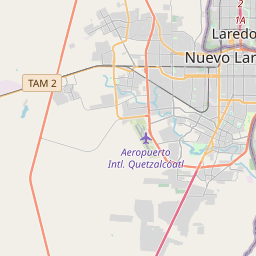Charlie Musselwhite







World-renowned harmonica virtuoso Charlie Musselwhite was born in Kosciusko on January 31, 1944. His great uncle, Lamar Coalson, once owned the store that occupied this site. Musselwhite began playing in Memphis and rose to prominence in Chicago, where he was befriended and mentored in the 1960s by many blues musicians who had also migrated from Mississippi. A perennial winner of blues awards and polls, he received a Mississippi Governor’s Award in 2000.
Charlie Musselwhite lived with his family at the corner of North and Wells streets in Kosciusko until they moved to Memphis in the fall of 1947, when he was three. He often returned to visit relatives here and in the Delta, and after he began headlining blues festivals in the area in the 1990s, he invested in property in Clarksdale.
Attracted to the blues as a teenager in Memphis, Musselwhite learned guitar and harmonica and sought out the blues singers he had read about in the book The Country Blues by Sam Charters (who later produced Musselwhite’s debut album). Will Shade, Furry Lewis, and Memphis Willie B. (Borum) became his first mentors. In November of 1962 Musselwhite moved to Chicago in search of employment, first settling in the Uptown area where many white southern migrants lived. He was soon immersed in the African American music and lifestyle of the South Side, however, and in 1964 he moved there to be closer to the blues. In 1963-64 he also roomed at the Jazz Record Mart and the Old Wells Record Shop with Big Joe Williams, one of many former Mississippians residing in the Windy City. Others, including Muddy Waters, Otis Spann, Big Walter Horton, and Magic Sam, also became close friends with Musselwhite, who later cited Horton, Williams, Homesick James, and John Lee Granderson as the bluesmen who taught him the most. He also acknowledged Little Walter and Robert Nighthawk as major influences.
As Musselwhite’s reputation grew as a performer in the blues clubs, Sam Charters invited him to record for the Vanguard label. His Stand Back! album of 1967 created such a stir, especially among audiences that were just discovering the blues as a voice of the ‘60s counterculture in California, that Musselwhite relocated to the San Francisco area in August of that year. A number of fellow Chicagoans including Paul Butterfield and Mike Bloomfield also made the westward move, as did Musselwhite’s friend John Lee Hooker from Detroit.
Although many white musicians had already adapted the blues into their country, rock ‘n’ roll, jazz, or folk music styles, Musselwhite always maintained a blues persona even while exploring a variety of American and world music genres. His trend-setting dedication to blues made him a role model, especially among harmonica players on the West Coast. Over the next four decades Musselwhite toured the world and recorded some thirty albums, many of which earned W. C. Handy Awards or Grammy nominations. When he and his wife, Henrietta, were married on January 26, 1981, in San Francisco, John Lee Hooker served as his best man
The Mississippi Blues Trail markers tell stories through words and images of bluesmen and women and how the places where they lived and the times in which they existed–and continue to exist–influenced their music. The sites run the gamut from city streets to cotton fields, train depots to cemeteries, and clubs to churches. We have a lot to share, and it’s just down the Mississippi Blues Trail.
The Mississippi Blues Trail is an ongoing project of the Mississippi Blues Commission. Funding for this project has been made possible by grants from the National Endowment for the Arts, National Endowment for the Humanities, Mississippi Department of Transportation, the Federal Highway Administration, AT&T, and the Delta Center for Culture and Learning at Delta State University plus additional support from the Mississippi Development Authority Tourism Division.
For more information visit msbluestrail.org.
Mississippi was the 20th state to join the Union, admitted on December 10, 1817.
The county was named after a prominent Choctaw chief, At
Attala County Timeline
This timeline provides a glimpse into the major events and milestones that have shaped the history of Attala County, Mississippi.
- 1833 - Attala County was established on February 19, 1833, as a county in the state of Mississippi.
- 1834 - The first courthouse was built in the town of Kosciusko, which later became the county seat.
- 1837 - The county's population grew as settlers moved into the area, mainly from the eastern states.
- 1846 - The first public school was established in Attala County.
- 1861-1865 - Attala County, like many other parts of Mississippi, was deeply affected by the American Civil War.
- 1879 - The county's first railroad, the Vicksburg, Shreveport and Pacific, was completed, connecting Attala County to the regional rail network.
- 1910 - The population of Attala County reached its peak at over 29,000 residents.
- 1956 - Attala County celebrated its centennial anniversary.
- 1970s - The county experienced significant declines in population as mechanization in agriculture led to fewer job opportunities.
- 1999 - The Mississippi State Penitentiary, also known as Parchman Farm, located in Attala County, was added to the National Register of Historic Places.
- Present - Attala County continues to be a rural community with primarily agricultural and manufacturing industries.